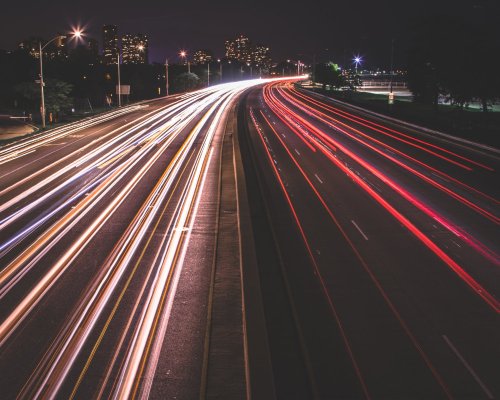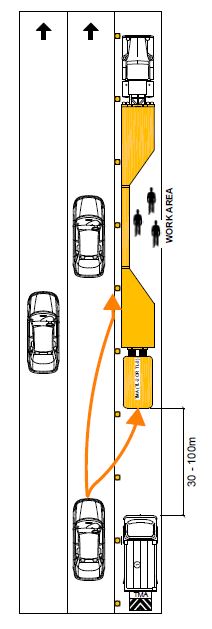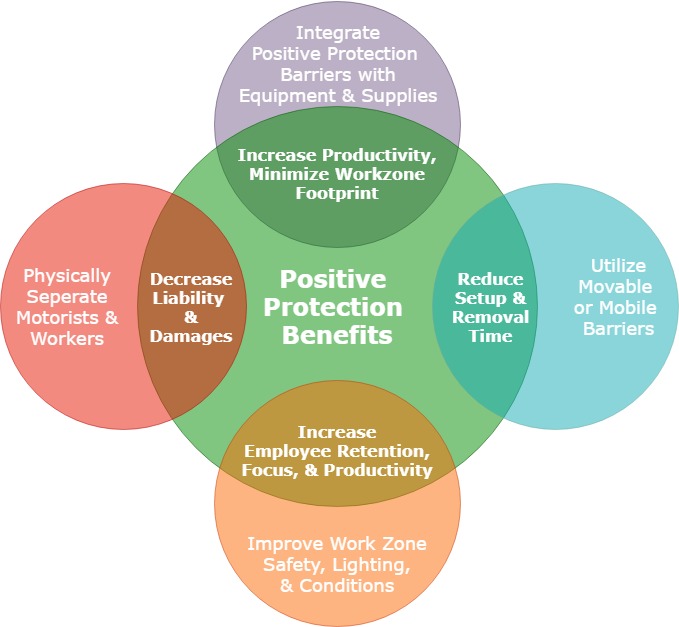What are Positive Protection Barriers?

Positive Protection are measures “between workers and motorized traffic” which “contain and/or redirect vehicles" and meet applicable crashworthiness criteria . 1, 2
Types of Positive Protection include highly mobile barrier, movable steel barrier, movable concrete barrier, temporary steel barrier, traditional temporary concrete barrier, crash cushions, and other strategies to avoid traffic accidents in work zones including full road closure. 3
Highly mobile barriers and other movable barriers enable field crews to quickly create work spaces that are physically separated from moving traffic and quickly removed from the roadway once the work is completed.
Commonly Cited Benefits
The rising number of accidents, injuries, and fatalities highlight the need for positive protection. In a national survey, 89% of highway contractors think positive protection would improve safety on their projects.
4
Innovative highway barriers such as Mobile Barriers, Movable, & Temporary Barriers are enabling managers to accelerate highway projects, increase roadway capacity to match daily traffic patterns, physically separate moving traffic and workers, minimize workzone footprints, and increase work zone safety.
Benefits vary by product and application. For example, California research found a cost benefit for highly mobile barrier of $1.9 million in 2008 dollars ($2.87 million in 2025 dollars) per year, per barrier.
14
Benefits vary by product and application. Commonly cited benefits of using Positive Protection include:
- Safeguarding Workers Against Intrusions
- Reducing Project Duration & Cost
- Maximizing Roadway Capacity
- Increasing Productivity with Onboard Tools and Supplies
- Increasing Efficiency/Saving Time
- Increasing Employee Retention
- Decreasing Liability and Damages
- Reducing Risk and Exposure to Dangers of Live Work Zone
True or False? "Cones, barrels, and intrusion alarms are NOT Positive Protection."
True: Cones, barrels, and intrusion alarms are NOT Positive Protection.
- Cones, barrels, and intrusions alarms are not a guard/barrier "between workers and motorized traffic".
- Intuitively, an errant vehicle (weighing a whopping 4,329 lbs on average) will continue unimpeded (not contained and not redirected) past an work zone intrusion alarm or through plastic cones/barrels (weighing 10-30 lbs on average).
- For example, "Intrusion alarms" are classified as "Other traffic control measures" (see 23 C.F.R. § 630.1108(c) and 23 C.F.R. § 630.1104).
- Recall that Positive Protection devices are placed "between workers and motorized traffic" and must function to "contain and/or redirect vehicles" and meet applicable crashworthiness criteria (see 23 U.S.C. § 112(g), 23 C.F.R. § 630.1104, and 23 C.F.R. § 630.1108).

|
"We have the technology and 'know how' to build our roadway system to anticipate user error. It can be designed, constructed, equipped, and operated to forgive the errant user and protect the innocent victim." |
"We have the technology and 'know how' to build our roadway system to anticipate user error. It can be designed, constructed, equipped, and operated to forgive the errant user and protect the innocent victim."


